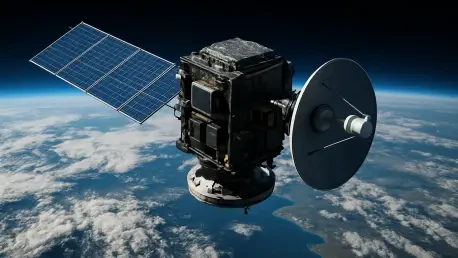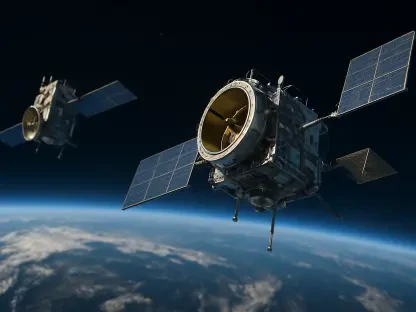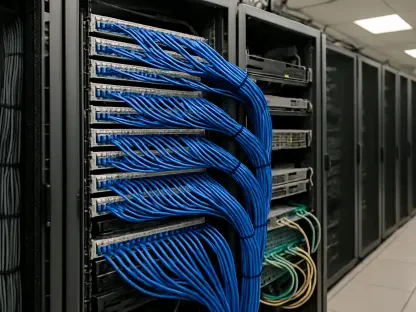In an era where satellite technology is becoming the backbone of global communication and data collection, the challenge of processing massive amounts of information in real-time has emerged as a critical hurdle for the space industry. Belgian spacetech startup EDGX is stepping into this arena with a groundbreaking approach, leveraging edge computing to transform how data is handled in orbit. With a recent €2.3 million seed funding round secured, the company is poised to redefine satellite operations through its innovative onboard AI computing system, known as Sterna. This development comes at a time when the demand for faster, autonomous data processing is skyrocketing, driven by applications ranging from earth observation to next-generation telecommunications. EDGX’s advancements promise to address long-standing bottlenecks, such as latency and bandwidth constraints, by enabling satellites to make decisions independently without constant reliance on ground stations. This shift not only enhances efficiency but also opens new possibilities for space-based intelligence.
Pioneering Onboard AI with Sterna
EDGX’s flagship innovation, the Sterna AI data processing unit (DPU), marks a significant departure from traditional satellite data handling methods. Built on NVIDIA Jetson Orin hardware, Sterna empowers satellites to run complex machine learning models directly in orbit, eliminating the delays inherent in the conventional “store-and-forward” model where raw data is sent to Earth for analysis. This capability drastically cuts down on latency, ensuring that critical insights can be derived almost instantaneously. Moreover, by processing data at the source, the system reduces the bandwidth needed for communication with ground stations, a crucial advantage as satellite constellations grow in size and complexity. Applications such as real-time earth observation and spectrum monitoring stand to benefit immensely, as timely data can now drive faster decision-making for industries ranging from agriculture to defense.
Complementing the hardware, EDGX has developed SpaceFeather, a proprietary software stack designed to withstand the harsh conditions of space. This includes a radiation-hardened Linux operating system, alongside features for health monitoring, fault detection, and recovery. What sets SpaceFeather apart is its adaptability, allowing new functionalities to be deployed even after a satellite is launched. This flexibility ensures that the technology remains relevant amid rapidly evolving needs, providing a robust foundation for autonomous operations. As satellite networks expand to support emerging technologies like space-based 5G and 6G, such innovations are vital for maintaining efficiency and reliability. EDGX’s focus on integrating cutting-edge hardware with resilient software positions Sterna as a game-changer in addressing the data processing demands of modern space missions.
Strategic Funding and Market Validation
The €2.3 million seed funding round, co-led by imec.istart future fund and the Flanders Future Tech Fund, underscores the confidence investors have in EDGX’s vision for satellite edge computing. This financial backing, coupled with a €1.1 million commercial contract from a satellite operator, signals strong market readiness for the technology. Additionally, an in-orbit demonstration scheduled aboard a SpaceX Falcon 9 in early 2026 highlights the company’s commitment to proving its capabilities in real-world conditions. Such milestones are not just technical achievements but also validations of the urgent industry need for solutions that can handle the data deluge from space. EDGX’s ability to secure contracts before flight validation speaks volumes about the pressing demand for real-time processing solutions among satellite operators.
Beyond financial support, EDGX’s progress reflects a broader European push to strengthen homegrown space infrastructure amid global competition. Stakeholders view the company as a key player in a niche yet critical market, with its high-performance, accessible product filling a gap in edge computing for space applications. This regional support, combined with a clear focus on high-impact areas like telecommunications and governmental operations, positions EDGX to influence both commercial and strategic satellite missions. The alignment with trends toward autonomy and efficiency in space data management further amplifies the company’s relevance. As satellite constellations continue to multiply, the market’s endorsement of EDGX’s approach suggests a transformative shift in how space-based intelligence is gathered and utilized.
Shaping the Future of Space Data Management
Looking back, EDGX’s journey demonstrates a remarkable alignment of innovation and strategic timing, as the €2.3 million funding round provided the necessary resources to push forward with the Sterna system. The integration of onboard AI processing tackles longstanding industry challenges, setting a new standard for efficiency in satellite operations. Collaborations with key investors and operators validate the technology’s potential to reshape data handling in orbit, while planned missions in 2026 offer a tangible path to showcase real-world impact. For the industry moving forward, the focus should be on scaling such technologies to meet the exponential growth of data demands. Exploring partnerships with global satellite networks and investing in further software enhancements could ensure that edge computing remains at the forefront of space innovation. EDGX’s contributions highlight a pivotal moment in spacetech, urging stakeholders to prioritize autonomous systems as the foundation for future space exploration and communication advancements.









